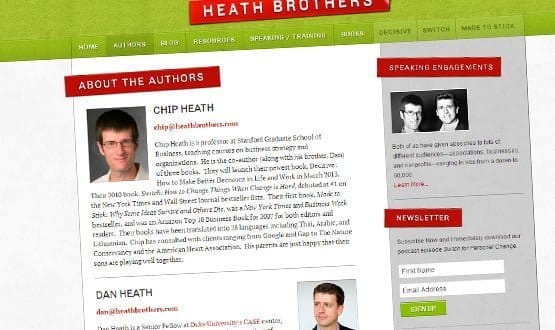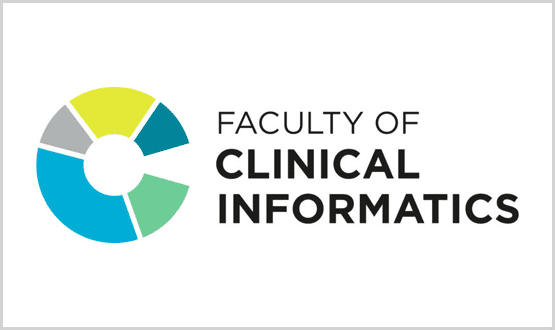Health CIOs urged to pick out brown M&Ms
- 25 February 2014

Chief information officers gathered in Orlando for HIMSS 2014 were advised on improving their business decision making by New York Times best-selling author Chip Heath.
Delivering the keynote address to the College of Health Informatics Executives CIO Forum, which precedes the show, Heath urged the audience to widen their options, reality-test assumptions, have confidence in their professional experience – but also to plan to be wrong.
“Humanity does not have a distinguished track record at making decisions,” said Heath. “A perfect decision world looks quite different to world we live in.
“We’d never be swayed by things we thought we’re cool and later regretted,” he added, illustrating the point with slides of leisure suits and mullet hair cuts.
Yet study after study shows that bad decision-making is as rife in the world of business as it is in fashion.
“In a recent poll of 2,000 executives, 60% said they made bad decisions as frequently as good decisions – that’s alarming,” Heath told his audience.
Trust your gut: but train it first
To illustrate this point, Heath, who has written a series of best-selling books on decision making with his brother, Dan, pointed out that 83% of mergers and acquisitions create no shareholder value, even though “these are some of most analytic decisions that get made in business.”
Similarly, he said that studies suggested that up to 40% of senior executive appointments didn’t work out as hoped.
“Our culture gives us some advice about decision making: ‘trust your gut’,” he went on. “Though when the gut became the go-to organ for wisdom I’m not sure. Mine lies to me all the time: ‘You want that cheesecake. You deserve that cheesecake’.”
Gut-instinct is really a short hand for describing the intuition gained from experience, Heath argued; and sometimes that’s just fine.
“Trust your intuition when you have about a decade of experience, which equates to about 10,000 hours,” he said. “If a decision makes it up to your level, it will be a decision that your organisation hasn’t grappled with well.”
Yet, he went on, there are techniques that decision makers can learn to help them get the most out of that experience, and so make better decisions for themselves, their organisations, and those that rely on them.
Widen your options
The first recommendation that Heath urged on his audience was to deliberately widen their options when decision making.
“If you are only looking at one option, you may be falling guilty of what psychologists call ‘narrow framing’. By framing decisions as a ‘yes’ or ‘no’, just a single option, you may not be looking at the best options available to you.”
Heath, who also teaches courses on business strategy at the Stanford Graduate School of Business, said studies had found that single option decision making was typical of teenagers.
Other studies had found that Silicon Valley leadership teams that looked at multiple options were faster at decision making than those that considered one option at a time.
“Let’s consider at least two options, and make sure we have a back-up. Widening decisions will give a better lay of the land and make us better decision makers,” he asserted. “If you are only looking at one option, I urge you to have an alarm ring in your head.”
Reality test assumptions, create distance
The second related technique Heath put to his audience was to reality-test assumptions and avoid what psychologists call ‘confirmation bias’; the tendency to place much more weight on arguments that support existing assumptions.
“You are twice as likely to look at information that supports your current belief as information that doesn’t,” he said. “To overcome this built-in bias, you really need to reality-test assumptions.”
The third technique was to attain some distance from decisions and not make them based on short-term emotion.
“Stepping back, either through taking time or framing the question differently, will help us make better decisions,” he said. “Adding distance and time – such as sleeping on a decision – helps us choose on what is most important.”
He suggested that one useful technique is the 10/10/10 test, considering what the impact of decision will look like in ten minutes, ten months, and ten years.
Prepare to be wrong
The fourth technique was planning on the basis that some decisions will be wrong. “Let’s make some preparations [on the basis] that our decisions may not be as good as we think they are.
“The villain here is overconfidence. Hedge your bets. Doctors who say they are completely certain about a diagnosis are wrong 40% of the time. So when a doctor says they are absolutely sure – ask for a second opinion.”
Less flippantly, Heath told healthcare CIOs that they should plan for contingencies and set review points. “Force yourself to consider other alternative futures, ones in which plans don’t work as you hope,” he suggested.
“Set simple tripwires that would force you to reconsider a decision, such as a project reaching a certain cost.”
Not that the tripwires have to be financial. Heath cited Van Halen’s famous ban on brown M&Ms as a great example. Van Halen’s David Lee Roth introduced a clause specifying that a bowl of M&Ms should be provided backstage, with all the brown sweets removed, in the band’s contract with venues.
The clause was introduced to make sure that the venue had properly read and honoured the terms of the contract, which also covered safety issues.
“If the band arrived at a gig and found there were brown M&Ms back stage they knew immediately the contract hadn’t been read. David Lee Roth is not a diva but a business decision making leader,” said Heath.
Recognise the value of brown M&Ms
When faced with having to implement decisions taken by others, or in which options have already been closed down, Heath concluded that a useful exercise was to introduce vanishing option test.
“Ask ‘if this option wasn’t available what would we do?’” He said that very often this would stimulate really creative suggestions.
“You are making critical decisions for your organisation and also helping others make decisions. We can never be perfect but we can better.”
EHI editor Jon Hoeksma is blogging from HIMSS14, focusing on leadership issues and the 'meaningful use' agenda.




